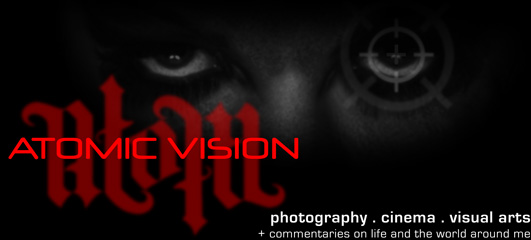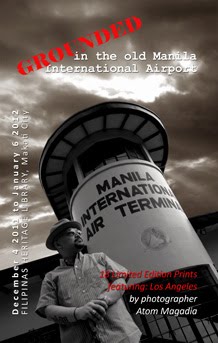I love reading, and collecting books is a passion of mine. So this holiday season, I have selected 15 books on photography, cinema and the visual arts from my own library to share with you. Most of these books just came out this year (all are still in print) and should be available in your local bookstores.
Vacation time is a good opportunity to catch up on some reading-- in between family gatherings and binge feasting:) I have read all these books from cover to cover, and have found them invaluable to my own work. I hope you find some of them helpful to you too...
Vacation time is a good opportunity to catch up on some reading-- in between family gatherings and binge feasting:) I have read all these books from cover to cover, and have found them invaluable to my own work. I hope you find some of them helpful to you too...
Have a MERRY CHRISTMAS and a prosperous NEW YEAR!
Have you ever wondered how one work of art could be sold for millions, while another can be almost worthless? Michael Findlay examines this phenomenon in his book, "The Value of Art." He demystifies the process of how art is bought and sold, its commercial and social dimensions while constantly looking beyond the sales numbers to emphasize its essential cultural and spiritual dimensions. As a trained financial analyst, I have always been fascinated with "value" and how we give or assign "worth" to objects and experiences. This book is an enlightening guide to the perplexing and amusing business of Art, for the curious.
Although I also paint, I included this book on this list primarily because I believe that portrait photographers (and cinematographers) can learn a lot from studying formal Portraiture. I can trace a lot of my skills in capturing expression, gesture, personality, emotion and soul (to accurately capture character), through my personal experience of painting and sketching people. When you look very closely at each line and shade on a person's face, taking note of how each muscle contracts and relaxes, you become hyper aware of how our bodies openly express our inner state. "The Society Portrait - from David to Warhol" traces formal Portraiture's development from Napoleon's time to the present, highlighting its progress from one art period to the next-- delving into the changing outlook of society from generation to generation. The book is filled with examples from major of artists, we can all learn from.
"The Passionate Photographer" by Steve Simon is a great book that fills the gap left-off by most "how to" photography books-- mastering the craft psychologically, translating ideas and thoughts to create great images, dealing with your fears, gaining inspiration and passion for your art. It is filled with great insights, real world examples and practical tips on how to improve your photography and bring it to the next level. I am already passionate about my work, yet this book has helped me focus on the details of what can make my photography consistently exceptional, and at the same time help keep me inspired.
Arnold Newman is one of my favorite master photographers. His photography has inspired me from the very beginning and has been one of the main influences for my own portrait work. The book, "Masterclass - Arnold Newman, contains more than 200 examples of his work including iconic portraits of Henri Cartier-Bresson, Brassai, Pablo Picasso, Salvador Dali, Marcel Duchamp, Mark Chagall, Max Ernst, Andrew Wyeth, Piet Mondrian, John F. Kennedy, David Ben-Gurion, Robert Oppenheimer, James Watson, I. M. Pei, Isaac Stern, Leonard Bernstein and Martha Graham among many other famous and notable sitters. It also contains a section on Newman's development as a photographer, from his apprenticeship in a portrait studio in the early 1940s to his gradual experimentation with the form, and finally to his own signature abstract, simplified, cropped style that I fell in love with. I highly recommend this book for all Arnold Newman devotees.
John Harrington is the president of the White House News Photographers Association and has worked for the Associated Press, the New York Times, the Washington Post, Time, Newsweek, the National Geographic Society, People and Life. His book "Photographs from the Edge of Reality" takes us inside his career as a photojournalist, from the spring of 1990 when he gained his press pass to shoot President George H.W. Bush and Soviet leader Mikhail Gorbachev, to his work with current President Barack Obama. I love looking into other people's experiences, and this book gives me a window into the life of a photographer working in the White House, a rare treat.
I highly recommend the "The Street Photographer's Manual" for anyone starting out in "Street Photography." It is the most comprehensive "how to" book I have encountered regarding the genre-- a real manual that covers everything you will need to know to start shooting. But "Street Photography" is so broad and highly individualistic that knowledge beyond this guide, can only and will only be acquired once you shoot... and shoot... and shoot for years to come. David Gibson covers as much of the basics you will need to know, with great examples from his own work and portfolios from other well-known practitioners. I disagree with some of the parameters he suggests in the book, but "Street Photography" is a subjective field and there is no way anyone can definitively tackle every detail.
"The New Street Photographer's Manifesto" is a more condensed version of the previous book. Like "The Street Photographer's Manual" it gives great tips and technical information on how to start shooting "Street," but in a more compact and economical package. Tanya Nagar provides good examples from practicing street photographers as a guide. To me, this book is a good enough backgrounder on the genre to start from. I recommend it highly as a great "stocking stuffer" for any would be street photographer on your list.




























































